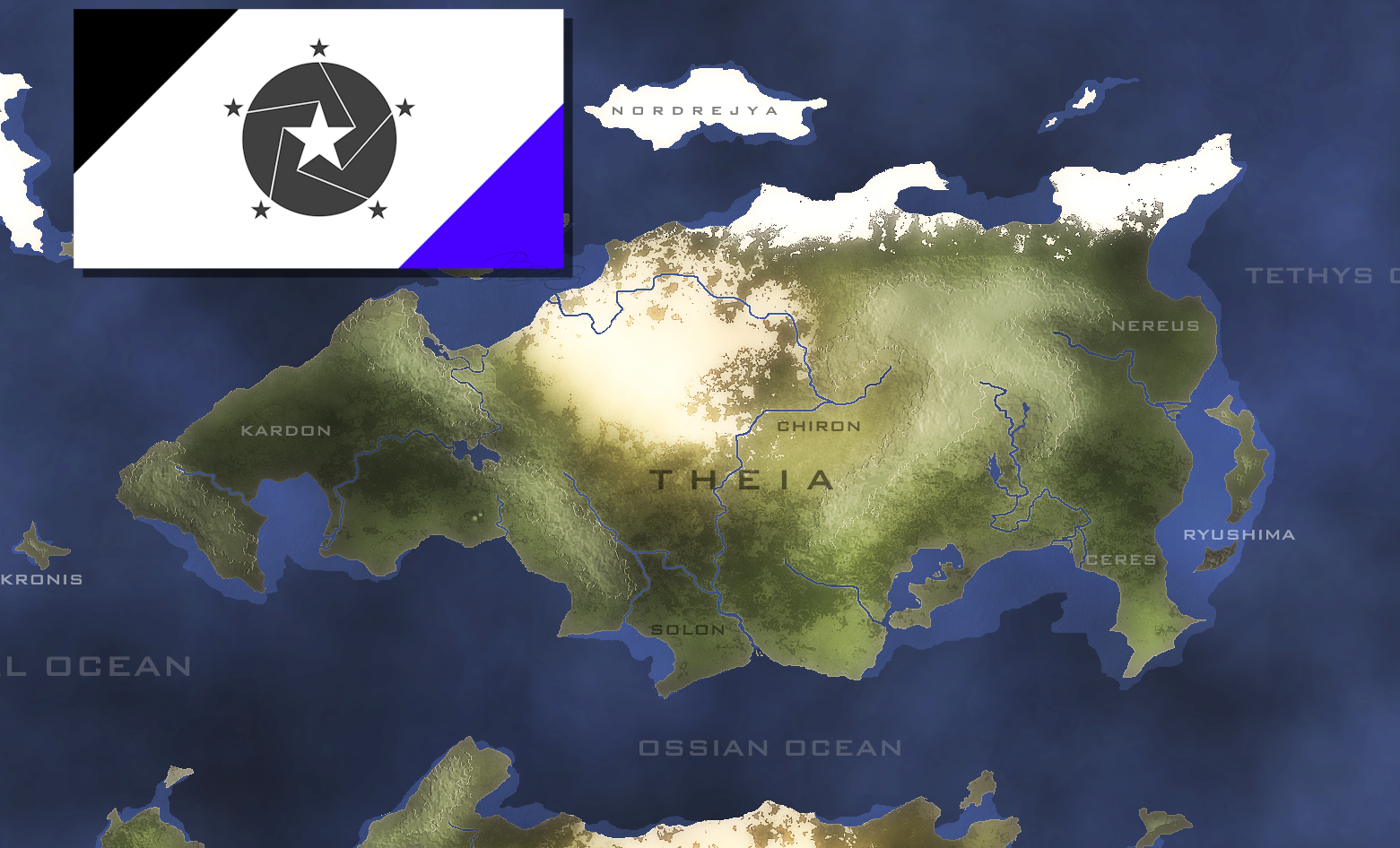COUNTRIES | THE THEIAN FEDERATION

The Theian Federation came about during territorial reorganization on the Theian continent following The Two-Years’ War. Having been freed from the oppression and ambitions of the former Republic of Sinaria, the remaining territories gathered and drew new lines, dividing the continent into five provinces, all of which would be equally united under a centralized federalized democratic republic managed by them. The economic system was centered around federally regulated limited capitalism. The constitution focused on eliminating tyranny and limiting, within reason, the effects of power, money, and government to impinge on the basic rights of individuals; rights were reserved based on the amount of capital an individual had, becoming more limited to obligation back to the country as that amount rose.
GOVERNMENT
The Theian Government was a Representative Democracy (Republic). Each of the five territories had a parliamentary legislative branch, a judicial branch, and an executive branch, the members of which were all nominated and elected by the citizens of the territory. There were no political parties, and individuals who were nominated were suggested by local petition. Service in the government was obligatory if elected and conferred no financial benefits to those elected. Terms were strictly limited. The three branches of government served to check and balance each other.
A Federal Government of the same basic design existed to serve and moderate the nation as a whole. The nomination process for candidacy differed, however, in that those elected to office in provincial governments became eligible for a term at the national level once their regional term was over. The nation as a whole voted for the national candidates via a popular vote poll. Representation from each territory was equal at the federal level and the Federal Executive sat as the sixth member of the five-member council of Governors—the elected Executives of each territory. The Federal Government’s sole purpose was to facilitate the moderation of disputes between territories, advise on and speak for international policy, and direct the military of the five territories in the event of international conflict.
ECONOMY
The New Theian Constitution, having been written by peoples who had learned modern lessons from the mistakes of past democratic free-enterprise-driven civilizations, included a provision not only limiting the power of government, but also that of any entity sufficiently powerful enough to influence people on a national scale such that it might rival governmental power, itself. The amount of freedom one had was maximized at the individual level, and more constrained the further one was up on the ladder of wealth and/or power. One of the intended effects of this provision was that small businesses had legal priority over massive corporations, leading to the distribution of most businesses and business wealth to be focused in the middle-class. The over-arching idea was that the Theian currency was an asset of the people, and the more of it you controlled, the more responsibility you had to the people.
During the initial splitting of the five territories, several large conglomerates existed which would be largely banished by the new constitution. They were given two choices—liquidate and break up into smaller locally-owned independent businesses, or become a state regulated and managed public ‘Utility Contractor.’ Of the large conglomerates, three remained incorporated and agreed to become Utility Contractors: General Commerce, Xenith, and Neutech. The Theian continent was split into three zones and each one of the Utility Contractors were assigned a zone. These entities were limited to being the providers of infrastructure, healthcare, and defense. Rather than pay taxes for these things, all Citizens of Theia owned shares of the contractor whose zone they resided within and could invest into their share as needed. The citizens of a zone were the shareholders and stakeholders of these entities; all profits made by them were invested back into the infrastructure and support system of their territory, and any leftover was either invested in emerging new technologies from small businesses or the value of each citizen’s share of the public Utility Contractor.